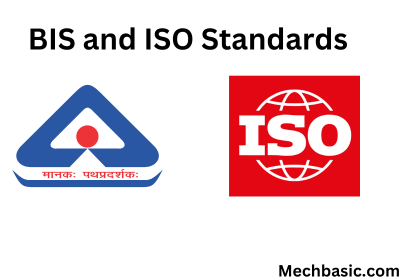In this article, we discuss BIS and ISO standards in Engineering Drawing in detail.

BIS (Bureau of Indian Standards) and ISO (International Organization for Standardization) set standards that guide the creation, presentation, and interpretation of engineering drawings, ensuring consistency, clarity, and accuracy across global and national practices.
BIS Standards in Engineering Drawing:
- BIS provides national standards for engineering drawings in India. The most commonly referenced standard is IS 696, which outlines the general requirements for technical drawings, including guidelines for symbols, line types, dimensions, and scaling.
- These standards help in standardizing the representation of engineering designs within India, promoting uniformity and facilitating understanding among engineers and manufacturers.
ISO Standards in Engineering Drawing:
- ISO standards, particularly ISO 128 and ISO 129, define the conventions for technical drawings, such as line types, projection methods, dimensioning, and tolerancing.
- ISO 1101 deals with geometric dimensioning and tolerancing (GD&T), which provides guidelines for specifying the allowable variations in size, form, and orientation of parts.
- These international standards ensure that engineering drawings are universally understandable, enabling global collaboration and manufacturing processes.
Importance:
- Consistency: Both BIS and ISO standards ensure that technical drawings are consistently interpreted and followed, regardless of the country or industry.
- Global Collaboration: ISO standards allow engineers from different parts of the world to work together seamlessly, while BIS ensures adherence to local practices.
- Accuracy and Efficiency: Standardized drawings reduce errors, improve manufacturing processes, and save time in design and production.
Key Difference between BIS and ISO standards
The key difference between BIS (Bureau of Indian Standards) and ISO (International Organization for Standardization) standards in engineering drawing lies in their scope and application:
- Scope and Jurisdiction:
- BIS: Focuses on setting standards for India. It governs national practices and ensures standardization within the country.
- ISO: A global organization that establishes international standards, promoting consistency and uniformity across different countries and industries worldwide.
- Application:
- BIS: Primarily used for engineering drawings and technical standards within India.
- ISO: Used internationally, facilitating global communication and standardization in engineering practices, allowing for international trade and collaboration.
- Adoption:
- BIS: Standards are legally binding within India, and compliance is essential for businesses operating in the Indian market.
- ISO: ISO standards are voluntary, though they are widely adopted across industries globally to ensure compatibility and quality in engineering drawings.
In short, BIS focuses on national standardization in India, while ISO establishes universal standards used worldwide.
In summary, BIS and ISO standards are essential for creating clear, accurate, and universally understandable engineering drawings that promote efficient communication and manufacturing.
